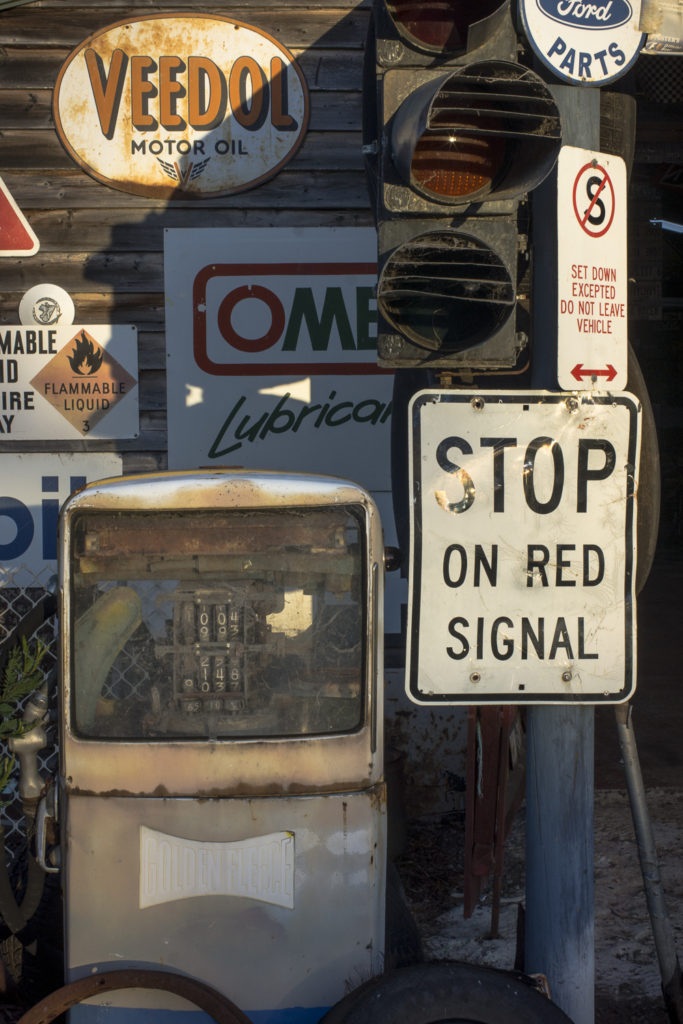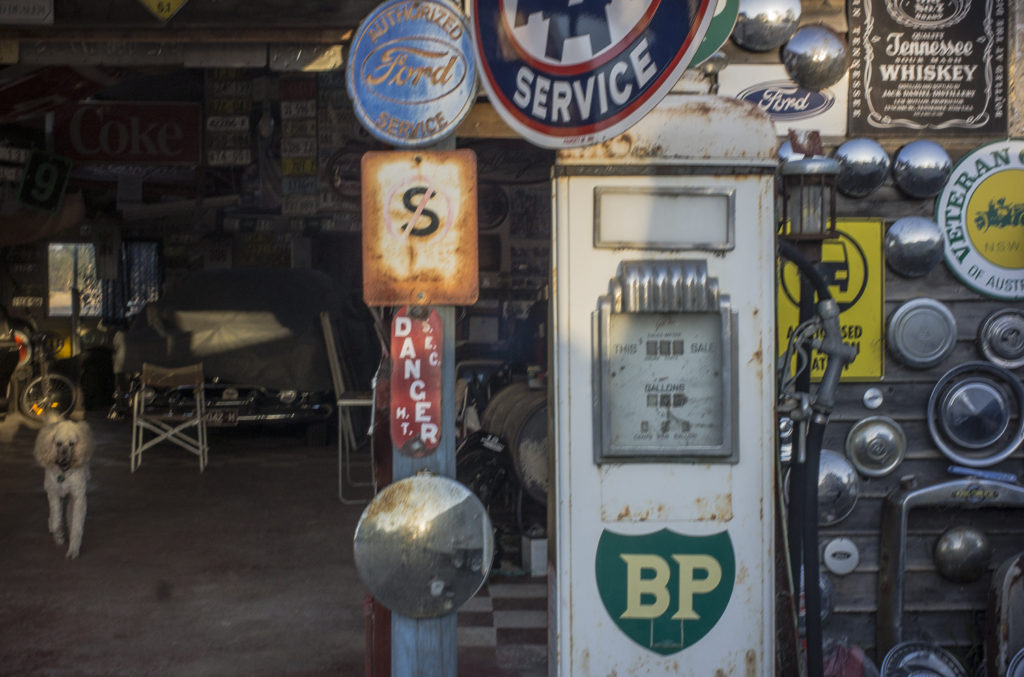Early in 2016 I made a road trip to the Wimmera Mallee in Victoria. I was intrigued by this montage of old petrol and oil signs around Horsham that signified an earlier of motoring–some are prior to 1945. Veedol, for instance, was the motor oil chosen by Henry Ford to be the used in the Model “T” which was the world’s first mass-produced car. Veedol motor oil signs now sell on ebay as collector’s items.
The photograph provides a scene as opposed to a narrative, a scene that is always from the past and that has to be read like a tableau or a panorama, with the gaze moving across the plane of view in different directions, back and forward.

It’s another era of motoring; the early one in which the car replaced the horse and buggy as a mode of transport. These are signs of industrial modernity in Australia.
We are looking back on our history with these signs. The photographs attend to the surface of the world, reproducing minute, which can only be understood in relation to history–of a world gone by. The photos allow us to glimpse what has been, thereby enabling us to reflect on the past and to open up new ways of seeing past events.
The photographic image, unlike the filmic image, does not easily show the passage of time, but it does show us that time has passed. What these photographs do is to bring the past into the present, confronting us with the passage of time and the stillness of that which has gone. They suggest that the past can only be understand through the lens of the present.

Most of the Wimmera Mallee consists of sand dunes that have been deposited as a result of movement of sand from the interior of Australia during arid glacial periods of the Quaternary. The soils are generally very infertile and sandy, and the porous sandy soils mean that any excess in an exceptionally wet year will recharge groundwater supplies which tend to be highly saline.The future(2030) temperature and rainfall estimates relative to 1980-99 conditions is that:
- Average temperatures will be higher by from 0.6 to 1.11°C.
- Annual rainfall will be reduced by up to 6%.
- Droughts will be more frequent and more severe.
The Wimmera Mallee becomes hotter and drier than it is now.

